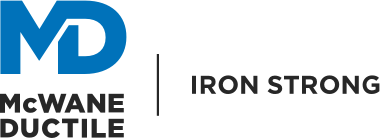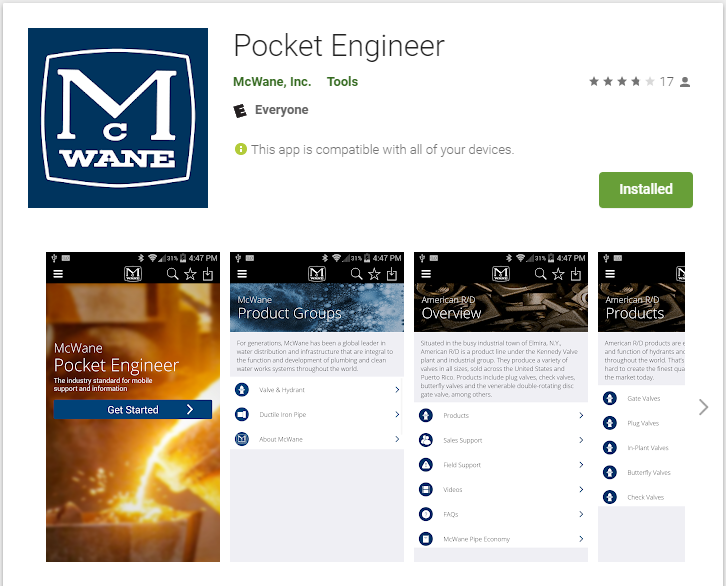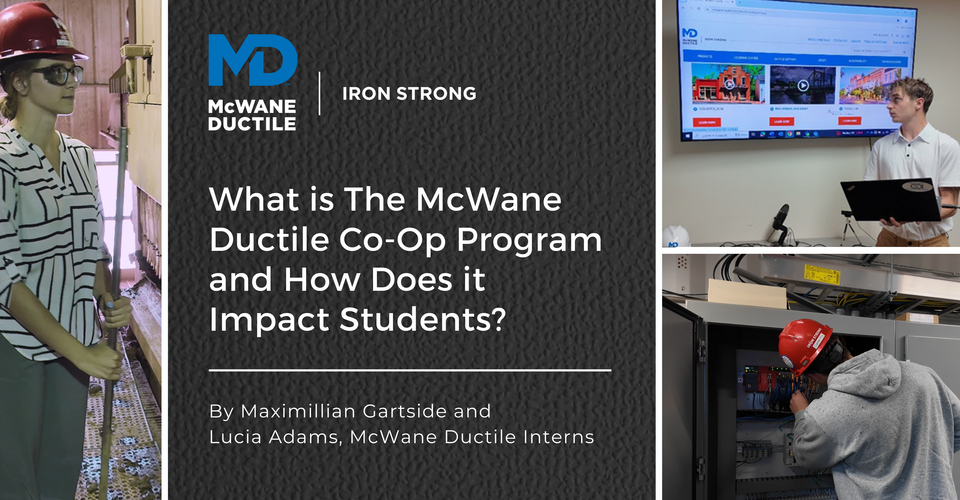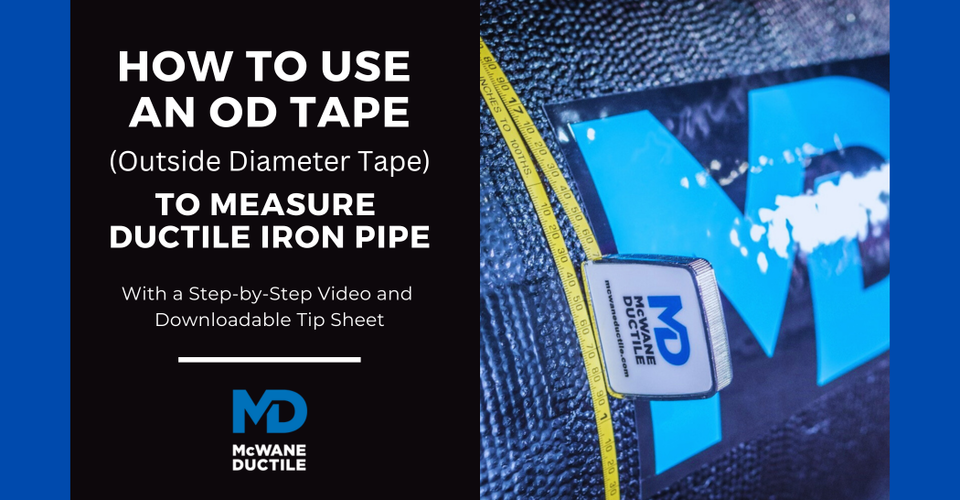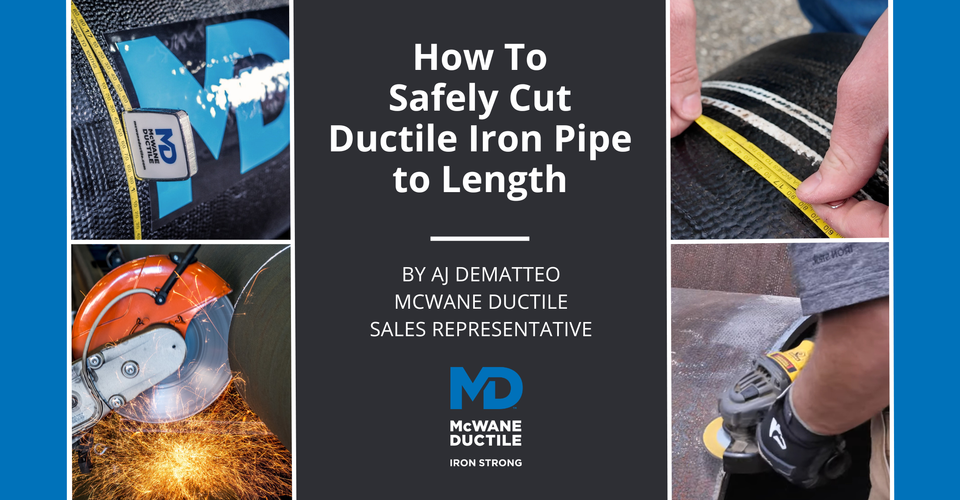Restrained joint systems are used because standard slip joint (Tyton®) pipe does not provide significant restraint against separation of the joint created by unbalanced thrust forces. It could take as little as 30 to 50 psi to separate a Tyton® joint.
These forces are typically caused by changes in direction - bends, tees, dead ends, valves, etc. in the pipeline.
Determining Factors
The number of restraints or the distance to restrain is a function of numerous factors:
- Soil conditions – Soils that offer more resistance will result in less restrained joints being required to contain an equal force in a less resistant soil.
- Type of pipe and its diameter- pvc pipe will require more footage of restraint due to the nature of its outside slickness or grip. Pipe diameter also affects the number of restrained joints that are needed through friction. The more surface area available, the more soil friction there will be trying to hold the pipe in place.
- Depth of cover – Depth of cover affects the amount of restraint by changing the amount of friction applied to the pipe walls through sheer weight. The more soil weight applied to the pipe wall, the less assistance the pipe will need to absorb those forces.
- Design pressure
- Trench type
- Type of directional change- bend, tee, dead end, valve, etc.
- Vertical or horizontal installation
- Polyethene encasement
These factors should be taken into consideration during the design of the restraint system to balance the hydrostatic thrust forces thus avoiding joint separation.
McWane Ductile offers the Pocket Engineer that can be used for a number of different design situations, including a “Thrust Restraint Calculator”. You can utilize the calculator by visiting pe.mcwane.com.
As an example, for a 12-inch ductile iron pipe, 3 feet of cover in a type 1 trench with a design pressure of 250 psi and static pressure of 70 psi, in medium silt soil, a 12-inch, 45-degree bend would need to be restrained for a minimum of 56 feet to avoid pipe joint separation.
Types of restrained joint systems have evolved from concrete thrust blocks and outside bolted bell restraints to more efficient restrained pipe joints, such as the TR Flex® joint, and restrained joint gaskets like McWane Ductile’s Sure Stop 350® gaskets.
Restrained joint gaskets are sometimes referred to as gripper gaskets and consist of a regular slip joint gasket but have embedded “teeth-like” stainless steel segments that dig into the pipe for a secure connection. They are not recommended for above ground applications like bridge crossings due to potential vibrations.
The TR Flex® joint utilizes the Tyton® joint gasket for a watertight seal along with a factory adapted spigot and extended bell casting to provide positive and permanent joint restraint. Locking segments are placed behind the spigot end after the standard Tyton® joint is belled up to complete the installation. The locking segments are self-explanatory as each set consists of a “Left Hand” (black) and “Right Hand” (red) segment along with a rubber retainer.
The purpose of the rubber retainer is simply to hold the left and right-hand segments in place until tension is placed on the joint.
TR Flex® is the easiest manufactured restrained joint to install or disassemble. Because the locking segments are not integrated into the gasket, separating a joint is as easy as removing each segment then pulling the pipe apart.
TR Flex® fittings can be used along with the pipe for a complete restraint system. It is ideal for numerous applications, such as traditional open trench projects as well as horizontal directional drills and is widely used for aerial or bridge crossings.
When utilizing the TR Flex® joint, it is essential to pull the slack out of the joint once the joint is assembled. The pipe is designed to breathe and flex which results in a small amount of room between the fully inserted spigot and the contact point between the metal wedges and the weld bead that exists at the spigot end of the pipe.
If the slack is not removed, there is a risk of the pipe “snaking” when internal water pressure is applied. This is especially important when utilizing TR Flex® pipe for an aerial installation such as a bridge crossing or pier to pier crossing.
There are advantages to utilizing TR Flex® or Sure Stop 350® gaskets to offset thrust forces versus the use of concrete thrust blocks or over bell harness restraints.
One advantage of utilizing TR Flex® or Sure Stop 350® gaskets versus an over-the-bell harness method is that once the harness is attached, which is a time-consuming process in and of itself, the deflection of the pipe is taken away, essentially tying each restrained piece into a straight line. TR Flex® and Sure Stop 350® gaskets offer the ability to deflect the pipe during installation while retaining the ability to resist pulling apart.
Problems You May Encounter
Let's discuss some of the problems that can arise when using concrete thrust blocks.
- Essentially, a thrust block is only as good as the soil providing support to the thrust block. If you do not properly address the soil surrounding the concrete, the thrust will simply push the concrete into the soil, which could result in a failure.
- Thrust blocks are often difficult to pour per the engineers specific design, which leads to ineffective restraint.
- In a metro area there may be a limited amount of space, and many concrete thrust blocks can be the size of a car or larger.
- Concrete thrust blocks may also be affected by future excavations for any new utility lines or other construction activity.
- When pouring concrete behind mechanical joint connections, there is a real risk that these connections can be damaged by the weight of the thrust block, which may rotate as the soil settles, resulting in a failure.
So, you may ask, "What about using restrained joint pipe with a thrust block?" This is what we refer to as the “belt and suspenders” approach. We do not recommend this method for any installation. While this method could assure that the thrust block is protected against future excavation or soil changes, it often gives the installer the opportunity to half-heartedly do one or the other.
Municipalities, utilities, and contractor’s preferences may vary, but the bottom line is restrained joint systems are meant to keep the pipeline intact and operational.
For additional information or design application assistance, our Sales Operations and Engineering group is available to help.
The McWane Pocket Engineer is a must-have for contractors, designers, inspectors, and engineers plus sales and support personnel alike in the waterworks and sewer industries. An easy-to-use comprehensive virtual assistant covering ductile iron pipe design, manufacture, use, and comparisons to alternate materials. Download it now and be ready for your next installation.
Need Assistance With Your Waterworks Project?
McWane Ductile offers multiple services to our customers extending far beyond manufacturing Ductile iron pipe. From estimating to design, from production to installation, we take great pride in providing education and assistance to water professionals throughout the water industry.
Check out all our digital offerings:
